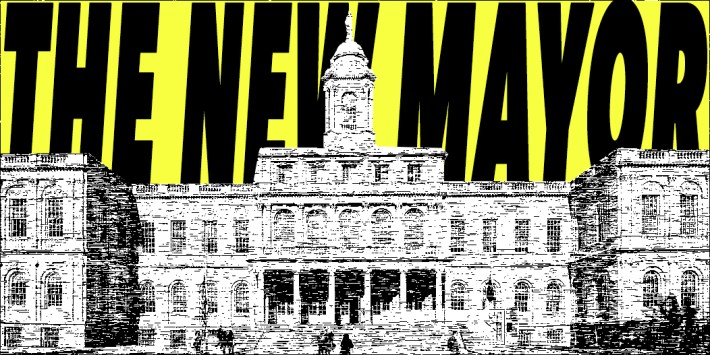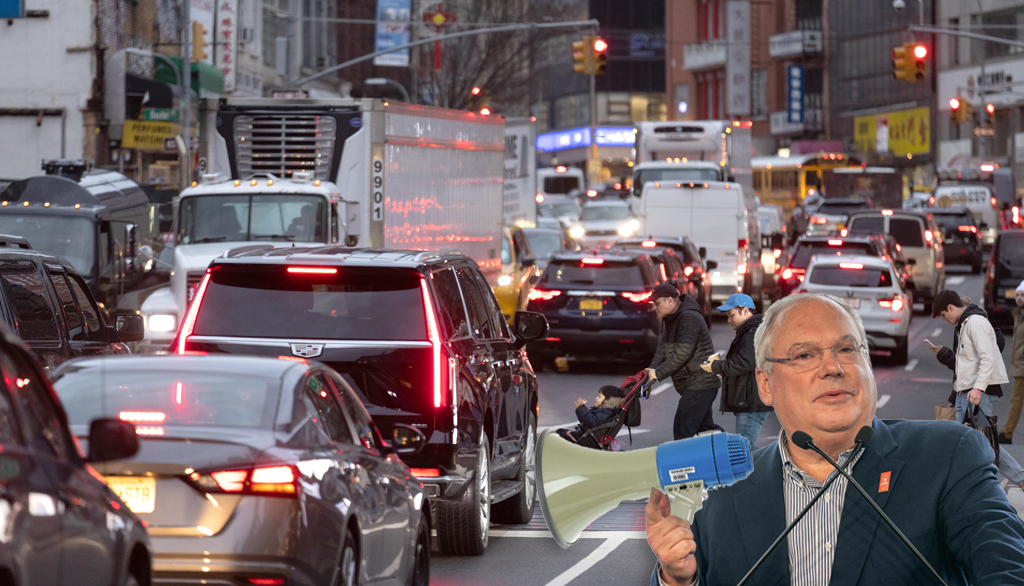Since Zohran Mamdani was elected mayor last week, Streetsblog has reached out to many former and current city officials for advice on what the mayor-elect should look for regarding the qualifications and temperament required for appointees to top positions. Today, we offer one of those opinion pieces, from former Department of Transportation Commissioner Hank Gutman, who served the last year of the de Blasio administration. Gutman wanted one thing clear: this piece is simply offering advice from someone who has been there; it is not, we repeat not, an attempt to be appointed.

A major decision facing Mayor-elect Mamdani will be to select a new Department of Transportation Commissioner. The scope of the assignment is vast as is its impact. Transportation is an issue confronted by every New Yorker, every day — and we are all experts.
Every Mayor since Mike Bloomberg has been engaged in the mission to reimagine how we move people to reduce our dependence on private cars and to focus instead on public transit, bikes and walking, and under Mayor de Blasio, a similar effort began to reimagine how we move freight — both to and within the city — to reduce our embarrassing over-dependence on large trucks and instead to use our original highways, the waterways, as well as rail and small, environmentally friendly vehicles.
At the same time, we have been reimagining how we use our streets with the transformation of Broadway and other iconic Manhattan thoroughfares, Open Streets in all five boroughs, and an Open Restaurant program that needs to be revived after being gutted by the most recent effort to “make it permanent.” And we must remain focused on the safety of all who use our streets — Vision Zero is not a slogan, it is a goal — and now includes challenges presented by all the new types of vehicles that share our streets and bike lanes.
We also have a duty to address the environmental justice and resiliency issues left us by the infrastructure decisions of Robert Moses and others in the past.
Having spent my career litigating and trying intellectual property and other complex technical cases, while working on various civic projects in my “spare” time, I confronted all this as DOT Commissioner in 2021, succeeding Polly Trottenberg when she moved to the federal DOT. Here are a few takeaways from that experience:
- The job of commissioner is to be a creative problem solver. You must analyze complex fact situations, often involving competing legitimate interests, and use good judgment and common sense to try to reach the right result on the merits.
- You are not the smartest person in the room, and if you believe otherwise you have just proven you are mistaken. Do not be shy about soliciting advice from others who are knowledgeable in the field — I benefitted immeasurably from the counsel of my predecessors, as well as groups such as Regional Plan Association, Transportation Alternatives and Families for Safe Streets and experts of all varieties. Be sure that your senior team includes people who are not afraid to tell you things you do not want to hear and to let you know when you are wrong. As in many organizations, the willingness to speak truth to power is sometimes rare, but always critically important.
- Listen to the public and their representatives. Public outreach is not some performative exercise, necessary to check various regulatory boxes, but an absolute necessity if you are going to make the right decisions. Yes, there are many New Yorkers who are resistant to change (particularly if it involves parking) and who may put their own personal or business interests ahead of those of the public, but dismissing them as NIMBY (or YIMBY) without thoroughly examining their concerns on the merits is a breach of public trust. No matter how expert you or your agency may believe you are, you need to accept the possibility that the people who live and work in our many widely varied communities may actually know the facts on the ground in their neighborhoods better than you do! Sometimes, expensive “public outreach” programs by the DOT and other agencies have been little more than theater and ended up feeding, rather than diminishing, public distrust of both the process and the end result. This is NOT a cookie-cutter enterprise and one size definitely does not fit all. A street redesign that might be perfect for Eighth Avenue in Manhattan could be an absolute disaster on Eighth Avenue in Sunset Park’s Chinatown. You need to listen and learn.
- Don’t be shy about borrowing good ideas from elsewhere. We are inclined to view New York City as unique — and it is! That doesn’t mean we cannot and should not learn from successful transportation innovations in other cities. When my talented DOT policy team presented an array of its most ambitious proposals — labeled as “moonshots” — I loved the presentation, but asked them to stop calling good ideas from San Jose, or Amsterdam or anywhere else “moonshots.” They were just good ideas New York hadn’t tried yet. Adopting the programs in New York might present new challenges, but there was no reason to reinvent the wheel.
- Technology can help solve the thorniest problems. The use of cameras to enforce our speed limits and red-light compliance have been important public safety tools. Not only are they more effective than relying on law enforcement personnel to observe violations, but they are fairer (since the camera doesn’t care who is behind the wheel) and they avoid the tragic consequences of traffic stops that escalate out of control. You need to expand and accelerate your use of similar technology, such as weigh-in-motion sensors and programs that trace truck routes, to make enforcement of our city’s truck weight and route restrictions real, after decades of virtually no enforcement.
- Break down the silos. It is a natural tendency in large, bureaucratic organizations such as the DOT for some career players to focus on protecting and preserving institutional prerogatives and powers. But in New York City, more than elsewhere, the ability to make any meaningful progress on transportation questions depends upon cooperation among and between different agencies, often including those at the state and federal levels. For example, you cannot possibly improve bus service for New Yorkers — with busways and express lanes — without coordination and cooperation between the DOT, which controls the streets, and the MTA, which controls the buses. Our most innovative and successful initiatives required us to partner with the MTA, the Port Authority or the EDC and NYPD. The entire organization needs to internalize the concept that we are ALL on the same team, charged with serving the people of New York.
- Change has to begin at home. The DOT has vast responsibilities to maintain and to operate the infrastructure upon which we all depend. This is a huge management job and those within the organization with those responsibilities must be supported and empowered. But just as it is a natural instinct of some within large organizations to protect the institution from external competition, those same instincts can create resistance to any change. Change is hard. It can be expensive and risky and if it fails to achieve its objectives, someone may take the fall. Some otherwise upstanding career employees are reluctant to make the leap. As one DOT colleague explained to me, “Commissioners come and go, Mayors come and go, but we will still be here.” I appreciated the candor, but not the message. The next Commissioner needs to be willing to make the necessary personnel decisions to move aside those who are unwilling to be change agents and to empower all the bright (often young) players who embrace the future.
- Finally, the new commissioner must never forget that government is a service industry — the job is to serve all the people of New York City. You work for them!! Each Friday, Mayor de Blasio participated in a radio talk show where he took calls from ordinary New Yorkers with concerns they wanted to raise directly with the mayor. By the time he was off the air, I had a list from City Hall of contact information for callers with DOT issues, who the mayor had promised a call from the commissioner. Making those calls was a highlight of the week; some of my most rewarding moments came in quietly solving the more discrete problems that mattered to individual New Yorkers.
Those who have the privilege to work in public service must never forget the meaning of those two words — the job is to serve the public. I wish the new mayor and his DOT commissioner all the best in carrying out their important mission.






